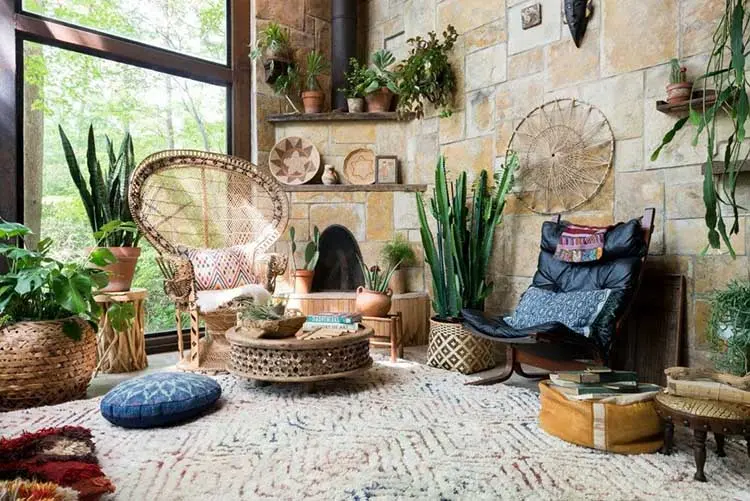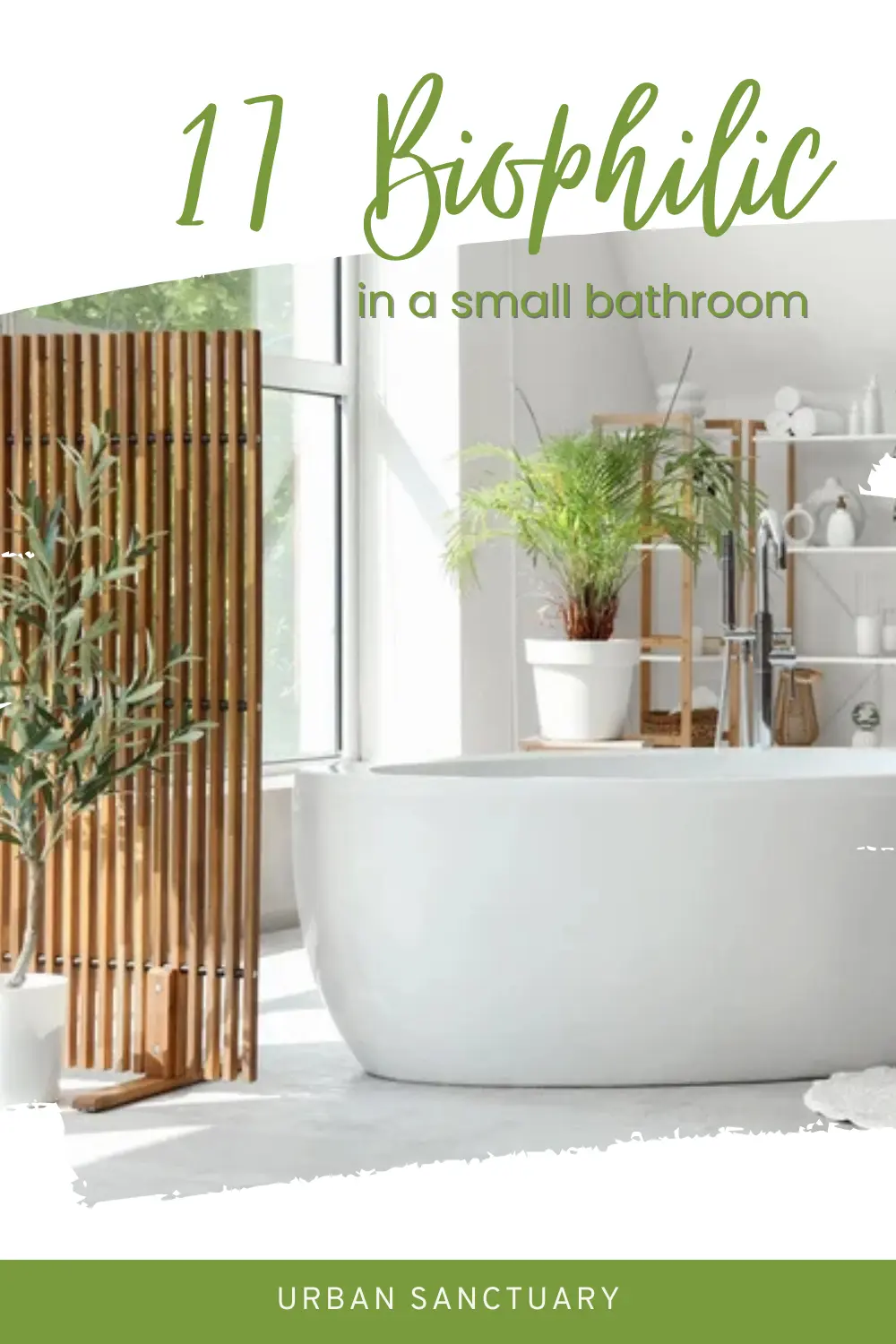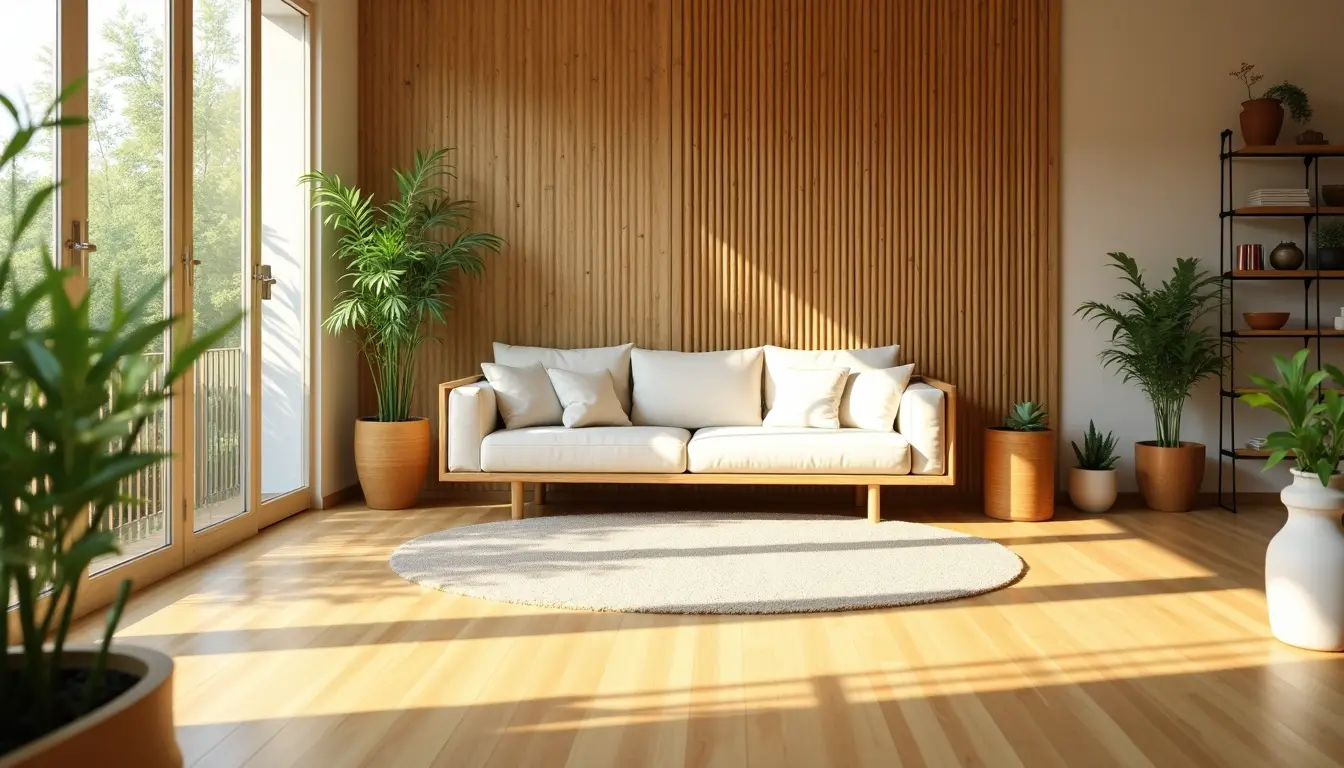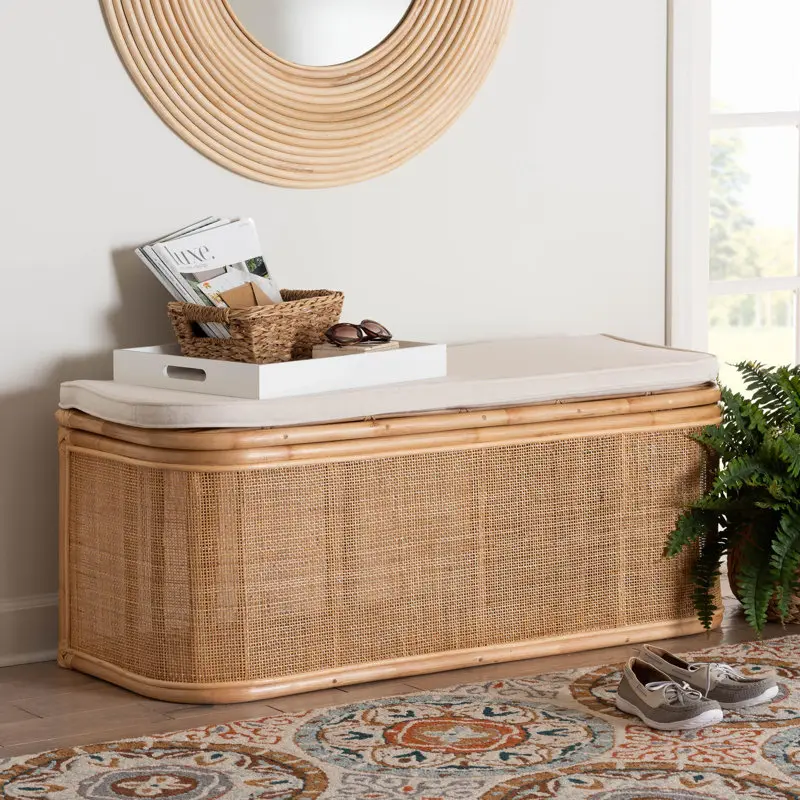Save this article for later

Bamboo stands out as one of nature's most extraordinary materials. It grows up to 1 meter daily and matches steel in strength. The natural elegance of bamboo furniture blends naturally with home decor styles of all types.
Bamboo brings both versatile esthetics and environmental benefits to your home's interior design. A single hectare of bamboo forest absorbs 12 metric tons of carbon dioxide each year to help alleviate global warming. The variety is remarkable - more than 1,000 species exist, and they create 35% more oxygen than regular trees. This piece explores why bamboo makes an exceptional choice for your home, from furniture and screens to flooring.
The Natural Beauty of Bamboo in Home Design

Source: Rowabi Lighting
Bamboo brings an organic warmth to interior spaces that few other materials can match. This versatile material combines visual appeal and tactile interest that raises the appeal of any room.
Bamboo's unique textures and colors
Natural bamboo creates an immediate visual effect through its distinctive grain patterns and color variations. The warm, earthy look of bamboo ranges from light golden hues to deeper browns and complements any design style. The organic texture adds depth and character to spaces. Your senses experience something that goes beyond mere appearance.
Designers can transform bamboo into many finishes. They treat bamboo to achieve various hues, tones, and finishes while keeping its natural beauty intact. You can use it for both statement pieces and subtle accents throughout your home.
Bamboo's texture adds warmth to interior spaces. The natural appearance connects us to the outdoors and promotes relaxation. People feel more mindful in urban spaces that often seem cut off from nature. Bamboo creates calming environments that encourage well-being naturally.
Modern bamboo interior design trends
Bamboo has grown way beyond its traditional uses in contemporary design. Designers have created bamboo furniture that showcases clean lines and modern forms. You'll find chairs, tables, and shelving units made from bamboo that offer lightweight functionality and sophisticated style across design esthetics.
Biophilic design has made bamboo a core material for connecting indoor spaces with nature. This trend incorporates bamboo into wall paneling, partitions, and decorative accents. The texture and visual interest maintain a strong connection to the natural world.

Check out our latest article - 17 Biophilic Design Ideas in a Small Bathroom
Designers now recommend wall-to-ceiling installations made entirely of bamboo logs to make bold statements. These create striking focal points with fascinating shadows and light play throughout the day. Bamboo screens and room dividers help create defined zones in open-concept spaces.
Bamboo works beautifully with various color palettes in contemporary design. Neutral tones create serene backdrops that showcase bamboo's natural beauty. Earthy colors enhance its organic qualities. Coastal or tropical-inspired spaces pair bamboo with soft blues and seafoam greens to create a relaxed, airy feel.
Hidden Environmental Benefits of Bamboo
Bamboo offers way more than just beautiful looks - it comes with amazing environmental benefits that make it a perfect choice for eco-conscious home design. Very few materials can match bamboo's impressive eco-friendly qualities.
Why is bamboo sustainable?
Most hardwood trees need decades to grow fully, but bamboo reaches maturity in just 3-5 years. This makes it an incredibly renewable resource. Cutting bamboo actually helps it grow better - the plant stays alive and keeps growing while its root system remains healthy. You can keep harvesting bamboo from the same plant without replanting it.
Bamboo leaves a tiny environmental footprint. The plant grows well without any pesticides or fertilizers, which means fewer harmful chemicals in our ecosystems. Its deep roots help prevent soil erosion and keep the soil healthy by creating a natural barrier. The plant can even thrive in poor soil conditions on unused land like hillsides and empty farmland. This makes bamboo excellent to restore damaged land.
How bamboo improves indoor air quality
Adding bamboo to your home brings a natural air purifier inside. Bamboo produces 35% more oxygen than similar groups of trees. which helps balance the carbon dioxide levels in your home's air.
People now spend about 90% of their day inside. This makes indoor air quality more important than ever. Bamboo materials can improve your living space's air quality by a lot and create healthier rooms with better air flow.
Bamboo's role in carbon sequestration
Bamboo acts as an impressive carbon sink and absorbs greenhouse gasses really fast:
- A bamboo forest can sequester up to 12 metric tons of CO2 per hectare annually
- Bamboo absorbs up to four times more CO2 than hardwood trees.
- It can remove carbon at rates of 6-13 Mg ha−1 yr−1
These carbon-fighting qualities stay active in bamboo products in your home. One cubic meter of bamboo assembled components can reduce 249.92 kg CO2 from the atmosphere. By decorating with bamboo, you bring climate-positive materials into your living space.
Health and Wellness Advantages of Bamboo Decor

Source: Mojo Boutique
Bamboo decoration goes beyond environmental benefits and brings amazing health advantages that affect your daily well-being. Your living spaces transform into environments that support both physical and mental health when you add bamboo designs.
Bamboo's effect on mental well-being
Looking at bamboo plants creates measurable relaxation effects, according to research. People who viewed bamboo showed substantially lower systolic and diastolic blood pressure. Brain activity measurements through EEG showed relaxation patterns after just 3 minutes of bamboo viewing.
These mental health benefits make bamboo plants perfect for decorating stress-prone areas in your home. Natural bamboo appearance strengthens your connection with nature and creates environments that encourage mindfulness and peace. The brain shows increased high alpha-wave and beta-wave activity when stimulated by bamboo views, which leads to better relaxation and attention. People achieved calmer states with higher meditation scores while viewing bamboo.
Reducing allergens with bamboo materials
Bamboo provides excellent benefits if you have allergies. Its natural antimicrobial properties make it resistant to house dust mites, bacteria, mold, and mildew. These qualities help reduce common allergens that cause reactions.
Traditional carpets can trap allergens and make indoor air quality worse over time. Bamboo flooring makes cleaning more effective and reduces contaminants in your space. The moisture-wicking properties of bamboo help control temperature and keep spaces dry. This prevents the growth of allergens like mold and dust mites that love moist conditions.
Bamboo furniture and bedding create cleaner environments if you have sensitive skin or allergies. Many bamboo products, especially flooring, meet the California 01350 standard - the world's strictest indoor air quality standard. Adding bamboo elements to your interior design helps maintain cleaner air by reducing irritants that might trigger allergic responses.
Practical Benefits You Didn’t Know About
Bamboo's beauty and environmental benefits are accessible to more people today, but this versatile material brings many practical advantages that make our lives easier and more comfortable. These benefits go far beyond just looks and deliver solid value in everyday use.
Energy efficiency with bamboo blinds and screens
Bamboo window treatments work as natural insulators in homes. Bamboo blinds block up to 60% of summer heat and keep indoor temperatures cooler during hot months. These versatile window coverings also protect against winter cold by cutting heat loss through windows by about 40%.
Bamboo's natural thermal qualities excel at keeping room temperatures steady. Homeowners who use bamboo window treatments save 15-25% on their yearly heating and cooling bills. This happens because bamboo's cellular structure creates air pockets that naturally insulate spaces.
Durability and low maintenance of bamboo furniture
Bamboo furniture lasts longer than many traditional wood pieces. The strength numbers are impressive - bamboo has a tensile strength of 28,000 pounds per square inch, even higher than steel's 23,000 pounds. This remarkable strength means your furniture stays solid through years of daily use.
Bamboo brings some amazing practical benefits:
- It fights microbes naturally, so you need fewer cleaning products
- It resists water, which prevents warping when spills happen
- It handles scratches and dents better than regular hardwoods

Check out our list of recommendation - My Best-Pick of Gorgeous Bohemian Inspired Storage Bench
Cost-effectiveness of bamboo designs
Bamboo makes good financial sense. Quality bamboo furniture might cost about the same as hardwood at first, but its value shows through its longer life and easy upkeep.
Most interior materials need replacing often, but bamboo items last 7-10 years longer than similar wood products. This durability saves money over time. Bamboo's growing popularity has made it more available, which helps keep prices competitive.
Bamboo stands out because it serves many purposes at once. It looks beautiful while providing practical benefits like temperature control, sound dampening, and room division.
Conclusion
Bamboo brings amazing benefits to your home that go way beyond its eye-catching looks. This guide shows how bamboo adds natural beauty while helping protect our environment. Without doubt, bamboo's quick growth and ability to trap carbon makes it perfect for eco-conscious homeowners.
Bamboo's versatility shines through its health advantages, especially when you have concerns about allergies. It creates peaceful spaces that boost mental health. It also proves practical with its outstanding durability, low maintenance needs, and energy-saving features that cut down your utility bills.
Your choice of bamboo means more than just picking a design element - it shows your commitment to sustainability, health, and practicality. Bamboo matches steel's strength while keeping the warmth and beauty of natural materials, making it unique among home design choices. Think about bamboo for your next home project, and you'll find out why this amazing material keeps winning over homeowners and designers alike.
FAQs
Q1. Is bamboo furniture durable?
Yes, bamboo furniture is exceptionally durable. It has a tensile strength comparable to steel, making it resistant to scratches, dents, and warping. With proper care, bamboo furniture can last 7-10 years longer than traditional wood furniture.
Q2. How does bamboo improve indoor air quality?
Bamboo naturally produces 35% more oxygen than equivalent stands of trees, helping to balance carbon dioxide in your home. It also has antimicrobial properties that resist dust mites, bacteria, mold, and mildew, reducing common allergens and creating a healthier indoor environment.
Q3. Can bamboo help reduce energy costs?
Absolutely. Bamboo blinds and screens can block up to 60% of summer heat and reduce winter heat loss by about 40%. Homes with bamboo window treatments have reported energy savings of 15-25% on heating and cooling costs annually.
Q4. What are the environmental benefits of using bamboo in home decor?
Bamboo is highly sustainable as it matures in just 3-5 years and regrows after harvesting without replanting. It requires no pesticides or fertilizers, prevents soil erosion, and is an excellent carbon sink, absorbing up to four times more CO2 than hardwood trees.
Q5. How does bamboo decor impact mental well-being?
Studies have shown that viewing bamboo can lead to lower blood pressure and increased relaxation. The natural appearance of bamboo creates a stronger connection with nature, fostering environments that encourage mindfulness and tranquility. It has been observed to increase high alpha-wave and beta-wave activity in the brain, improving relaxation and attention.